When your spine slowly gets the shape of your working chair, or your back thigh is on fire, and it’s hard to bend forward, you may be on your way to sciatica.
To fix things up, you can use some of the below yoga postures to release the pain you already have or prevent the future one:
- Child’s Pose (Balasana)
- Knees-to-Chest Pose (Apanasana)
- Cobra Pose (Bhujangasana)
- Needle Pose (Sucirandhrasana)
- Legs-up-the-wall Pose (Viparita Karani)
Sciatica relates to the pain located in the lower back, spreads in glutes, and feels along the back of the leg and calf. The intensity ranges from slight tension and stiffness in the muscles to “OMG, what’s going on?”.
Brief anatomy course. Sciatica nerve roots in the lower back. This is one of the biggest nerves in the human body. Is the sciatic nerve on the right or left? Both. It goes down from the lower back through deep tissues in the butt, through the backside of each leg, and down to the soles. This explains why the sciatica pain sometimes feels like needles or burning in the leg and not in the low back.
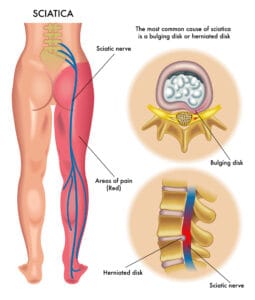
In an ideal world, you maintain correct posture every day, get enough activity, and good muscle flexibility. All that allows you to hold your spine in a normal vertical position and prevent any low back pain. In the end, it stops you from reading this post as well. However, if the above idyllic picture has nothing to do with your life, let’s see what causes the pain and suffering and how yoga can help you out.
So, Why Does It Hurt?
When the sciatica nerve is compressed by the surrounding muscles (like piriformis muscle), irritated or inflamed, the nerve roots start to hurt. Such pain is considered a symptom than a disease.
What Triggers Sciatica?
The mechanism of the pain is the same in all cases, but the causes may differ. Therefore, before you start using the above asanas, it’s good to know what triggers the pain.
The nerve can be compressed and\or irritated by the surrounding muscles and fascia tissues, and thus stretching these fibers can be a lifesaver here.
Which Yoga Is Best For Lower Back Pain?
With nerve inflammation, yoga can be used as an additional instrument to relieve the pain. Please note that you should not start exercising in moments of severe pain. Sometimes inflammations in the pelvic region, infections, and tumors can result in sciatica pain as well. So, first, see your health care provider and take down the inflammation.
Am I at Risk of Getting Sciatica?
People with obesity and diabetes are in the first line to get sciatica. Also, some indirect factors may put you at the risk of getting sciatica, for example:
- Aged people are more prone to disk issues such as herniated disk;
- Jobs with lots of twists that require moving heavy things during the day put extra load on the spine;
- A seated lifestyle and lack of physical activity may result in muscle stiffness.
What Styles of Yoga Are Best for Sciatica?
Iyengar Yoga
This yoga style is in the first place to practice for sciatica and lower back pain. The thing is, this practice includes a gradual increase of the asana difficulty. Also, Iyengar yoga uses lots of props for each pose, focuses on going into the pose safely, and adjusts the asana to the specific body needs.
According to the research published in 2009, Iyengar yoga effectively reduces pain intensity and improves the overall functionality of the muscles to prevent back pain.
Yin Yoga
Yin Yoga is among the relaxing and soothing yoga styles great for stretching the low back and whole body. Slowing down the breathing helps relax deeper and let go of all the tension – be it in your mind or body.
The activation of the parasympathetic nerves helps relax deep fascia tissues and reduce the chronic inflammatory processes in muscles and joints.
Restorative Yoga
This yoga type has much in common with Yin yoga. But restorative yoga works better if you need to recover after an injury or surgery (whether related to sciatica or not). It will be good to use such therapeutic yoga practice in cases of severe sciatica.
Yoga Poses for Sciatica Pain Relief
Child’s Pose
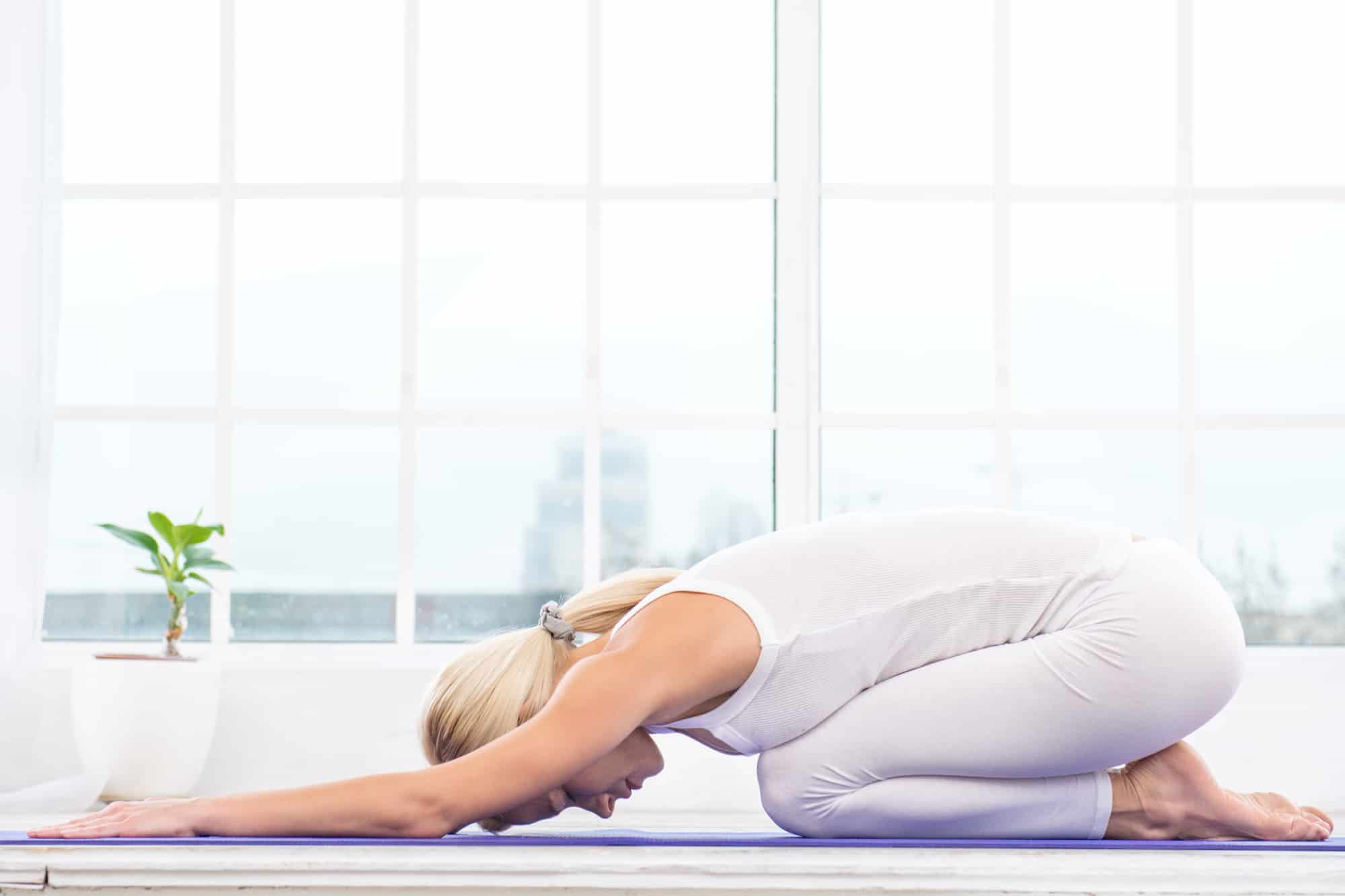
This pose is a super cool stretch for the lower, as well as for your thighs and hips. It helps relax and lengthen the spine in the most secure way taking off the vertical load. Plus, this position is trouble-free to practice anywhere if the pain is bugging you.
If your hips or lower back are extra tight, feel free to get a bolster or cushion and pace it either under your forehead or thighs.
Knees-to-Chest or Wind pose
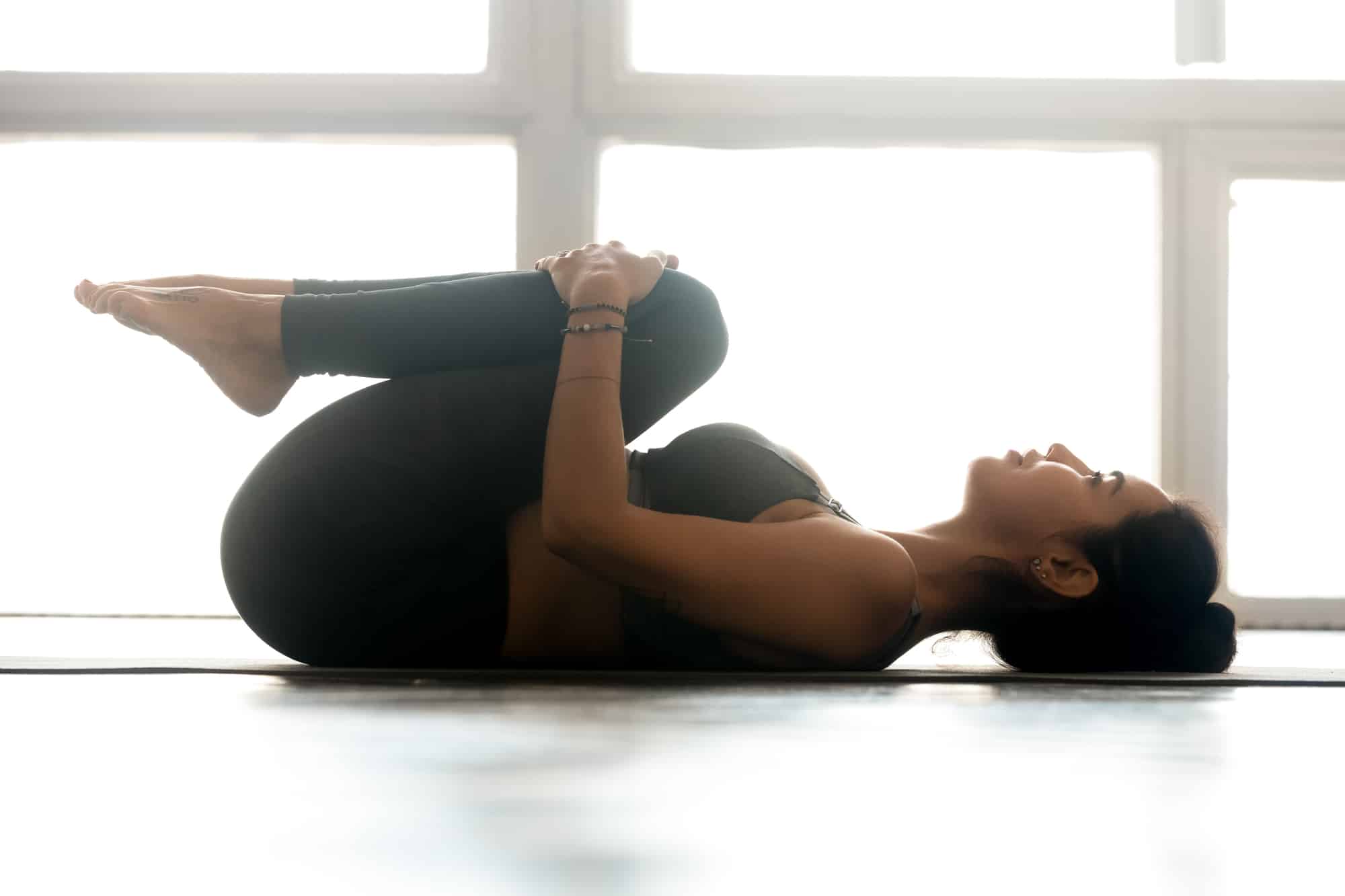
This one helps to release your glutes, hips, and back. If variation with both knees feels uncomfortable or painful, switch to holding one-knee-to-the-chest at a time.
Cobra Pose
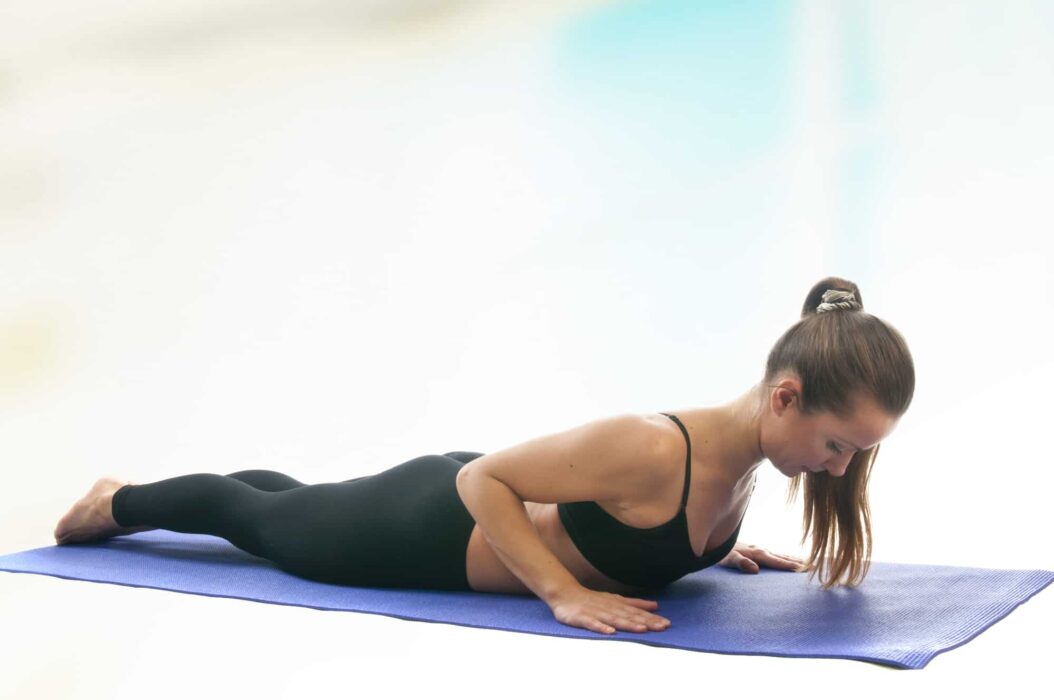
Along with improved circulation, you’ll get a neat gentle stretch of your spine.
Needle Pose
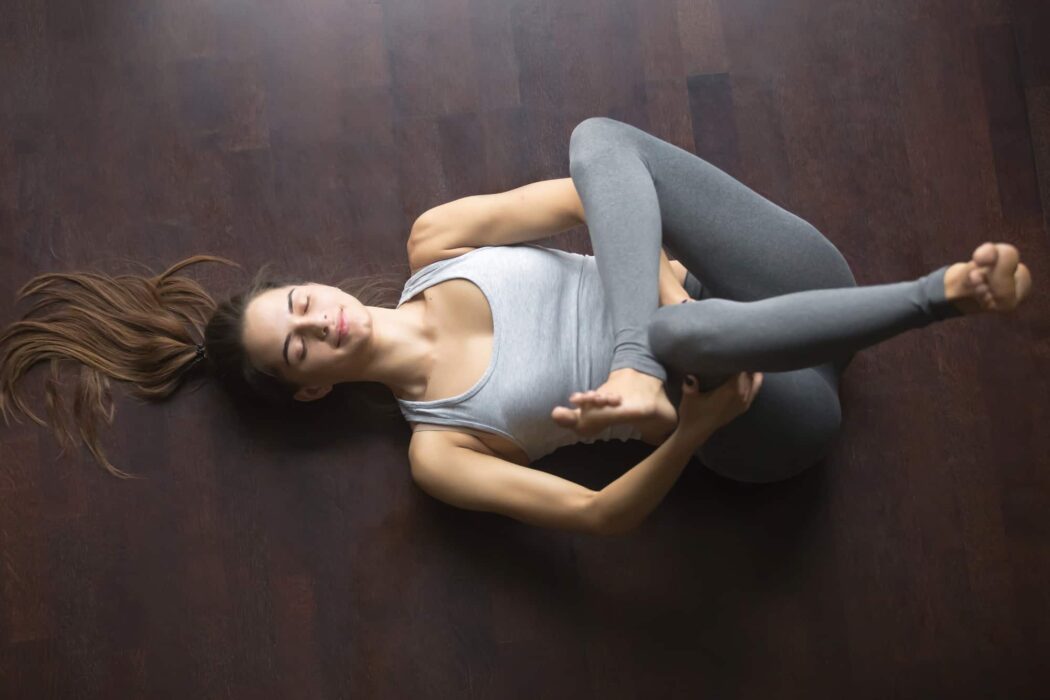
Instead of doing a full pigeon pose, lying on the back gives you all the stretchy effect of the posture but in a safe way.
This asana works to relax the piriformis muscle hidden in your buttocks that can press on the nerve and cause pain. You can also smoothly stretch and relax your thighs.
Legs-up-the-wall Pose
Finish the practice with this resting pose to let your body ease the tension and start the restorative processes in the muscles and nerves.
Before You Go…
What Is Best For Sciatica Rest or Exercise?
For light or middle sciatica, doing yoga for lower back or soft stretching is more effective than staying in bed. With lack of activity, back muscles become weaker, stiffer, and prone to pain.
Postures aimed at stretching and gentle warming up your lower back, hips, and calves will result in pain reduction and improved tissue condition.
Yet, limited activity is obligatory when the pain gets more debilitating.
What Exercises Are Bad For Sciatica?
Waist backbends and deep forward folds tend to increase the pain. Try to avoid doing Dancer and Wheel poses, standing forward folds, and all postures that require excessive bending of the waist and lower back. You can easily replace standing forward fold with a half-forward fold, seated forward bend with staff pose.
Which Yoga Is Best For Flexibility?
If you have active sciatica symptoms, avoid twists, especially if they are combined with folding forward. Asanas that require this should be avoided too, for example, revolved triangle pose or revolved head to knee pose.
Try to stay away from positions that require strong or active contraction of the gluteal muscles, as this can affect the sciatica nerve. Three-legged downward facing dog and bridge pose are examples of such asanas. Although, supported bridge pose is ok to practice as long as it doesn’t cause any discomfort.
How Long Will Sciatica Take to Heal?
In most cases, it takes 4 to 8 weeks to recover.
The chances are that sciatica will heal on its own. Still, without using prescribed exercises such as physical therapy treatment or yoga, the issue may become recurring.
When Should I Definitely See a Doctor?
If all of your self-healing measures cannot cease the sciatica pain for more than 7 days – you should visit your doctor. Plus, if you experience some of these “ red flag” signs, getting medical care is a must:
- Pain is severe and progresses towards worsening;
- You feel sudden pain in the lower back, your legs ( or one leg) become weak;
- The pain is a result of an injury you are aware of (car accident, sports trauma, etc.);
- You have trouble controlling your bowel and\or bladder.
Stay on the safe side of the practice! And be mindful of what your body is trying to say to you, and soon sciatica won’t be an issue for you.